Installing Semi-Rigid Dryer Hose to Prevent Fire Hazard
It’s time to take on a little fix in your laundry room. This single upgrade can prevent your home from a house fire. Let me show you how installing semi-rigid dryer duct can prevent a fire hazard!
Installing Semi-Rigid Dryer Hose to Prevent Fire Hazard
Last year when I showed you how to clean out your dryer hose to prevent dryer fires, I didn’t realize that I still had a fire hazard living in our laundry room. Since then, I stumbled across a video that scared the bejeezus out of me. Matt from Great Lakes Home Performance created this video showing what happens to foil dryer hoses.
I knew that white plastic dryer hoses were bad and had previously replaced ours with the flexible foil hose. But, I felt duped when Matt showed what happens to those “foil” hoses. First, what I didn’t realize is that those shiny metal hoses aren’t foil! They are made of flammable plastic. Go ahead, run to your dryer right now and see what type of duct work you have — I’ll wait. If it is white or shiny foil, I’ll show you how to replace it with semi-rigid duct to keep you and your home safe from a dryer fire. This is an easy tutorial, you can definitely do this (if your exterior dryer vent is on the 2nd floor, you can keep the same vent and just replace the hose.)
Materials:
(I’ve included affiliate links for your convenience. I earn a small percentage from a purchase using these links. There is no additional cost to you. You can read more about affiliate links here.)
- Semi-Rigid Transition Dryer Duct Kit
- 2 Adjustable Duct Elbows
- Tin Snips
- Drill or flat head screwdriver
- 4 Hose clamps (2 included with the kit above)
- Pliers
- Gloves
How to Replace the Dryer Vent Cover:
First, take a look at your dryer vent outside your house. Is it loaded with lint? If so, follow my tutorial for cleaning your own dryer vent.
Does the vent stick open or have gaps in it?
Were you nodding your head, yes? Well, if you like to keep your home rodent and bug-free, I highly recommend replacing the exterior vent at this time.
Detach the dryer duct (hose) from the wall inside your home first. Use the screwdriver to loosen the hose clamp.
Or if you have the tension style clamp, pinch the clamp wings together to release the hose.
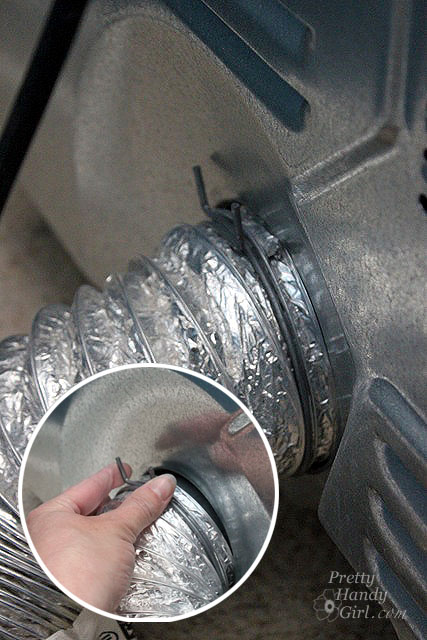
Head back outside. Unscrew the mounting screws from around the dryer vent and lift the dryer vent off.
Slide the new vent into the hole and attach it to the house with the screws provided.
For additional draft and bug protection, caulk around the edge of the vent cover where it meets the house.
When the dryer is on and air is forced through the duct, the louvers will open.
When the dryer is off the louvers will close and prevent unwanted house guests (spider, mice, etc.) from taking up residence into your dryer.
Ahhhh, much better, right?!
Periodically check the vent to make sure the louvers close and there is no lint build-up.
How to Replace the Dryer Duct Hose:
Pull your dryer out from the wall. Now is a good time to vacuum behind it to clean up any lint that has accumulated back there.
Hold the adjustable elbow next to the vent duct where it enters your laundry room. If it is too long, trim it with the tin snips to the depth of the elbow.
1) Feed the collar over the vent duct to cover the hole in the wall (and seal out any drafts.) Attach the collar with screws. 2) Feed one hose clamp over the vent duct.
3) Slide one elbow over the vent duct. 4) Tighten the hose clamp with the screwdriver until the elbow is secured to the duct. Tug lightly to make sure it won’t inadvertently slip off.
If you are having trouble slipping the elbow into the duct, you can use pliers to cut the tabs on the crimped end to allow you to collapse the collar a little more.
Remove the semi-rigid duct from the packaging. Extend the hose only long enough to reach your dryer. If your distance is short (and the duct too long), you might need to trim excess duct with the tin snips.
How to Connect the New Dryer Duct:
1) Slide the hose clamp over the end of the elbow. 2) Slip the semi-rigid duct over the elbow.
3) Slide the hose clamp over the semi-rigid duct and elbow. 4) Tighten the hose clamp until the duct is secured to the elbow. Gently tug the semi-rigid duct to make sure your connection is tight.
Shimmy behind your dryer (this reminds me of the time I was pregnant and had hired a handyman to re-route our dryer hose to a closer location. Handsome Guy and the Handyman were both struggling with the short duct and couldn’t attach it. I really wanted to push them both aside and do it myself. Unfortunately, at that point in my pregnancy, my belly’s depth was equal to my width and there was no shimmying behind any dryer for me.)
1.) Slide the hose clamp over the dryer exhaust. 2) Attach the elbow to the dryer.
3) Tighten the hose clamp onto the dryer. 4) You’ve got this right? Tighten the hose clamp onto the semi-rigid duct and elbow.
BAM! You’re done! When you push your dryer back, make sure you aren’t crushing the ductwork. Are you happy you learned how to install a semi-rigid dryer duct to prevent a fire hazard? Don’t forget to clean out your dryer and the ductwork at least twice a year.
Take care and stay safe! I care about you all a lot.
You might also like:
How to Clean Out Your Dryer Ducts to Prevent Fires
Learn how to keep your HE Washer Clean like the day it was delivered!
DIY Laundry Detergent & Miracle Stain Remover

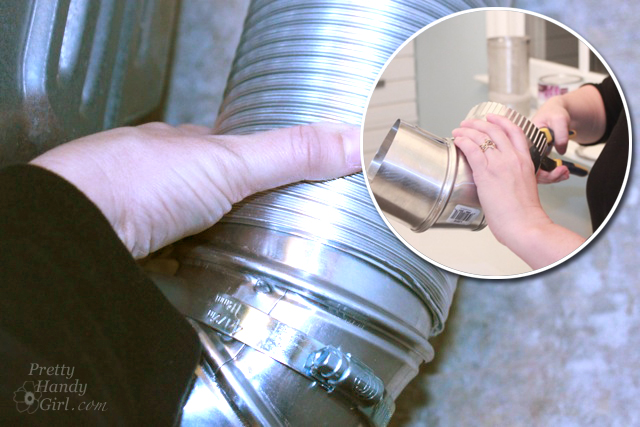
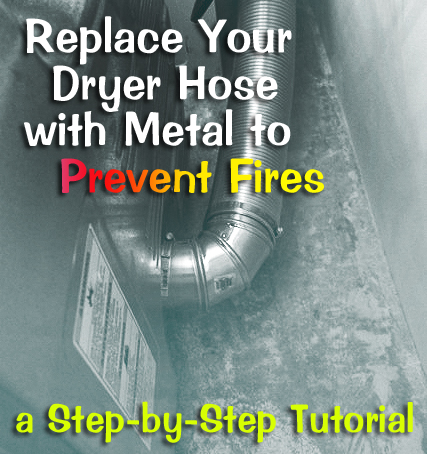
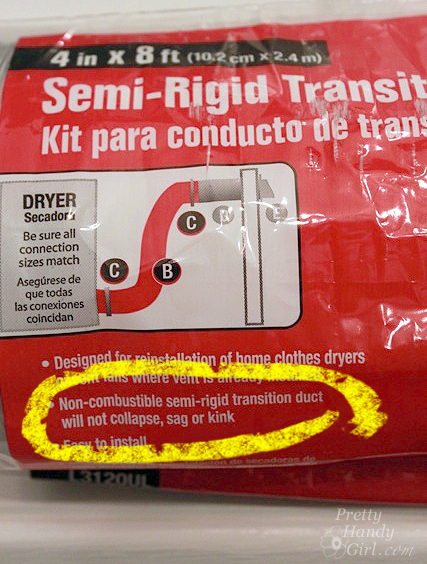
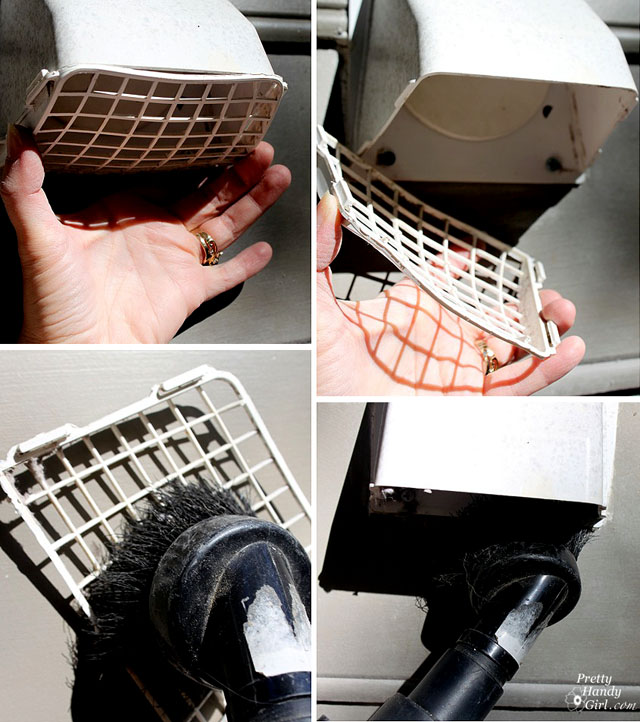
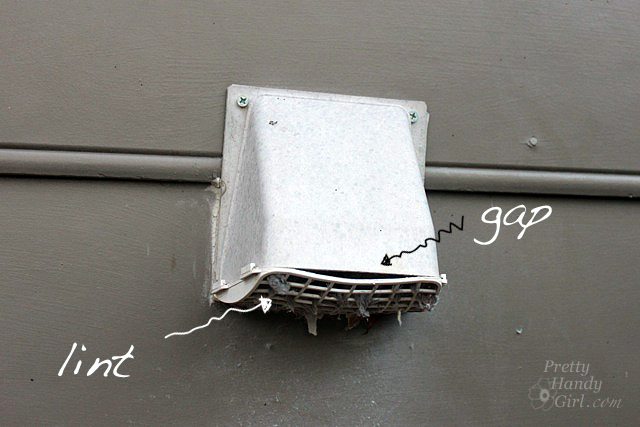
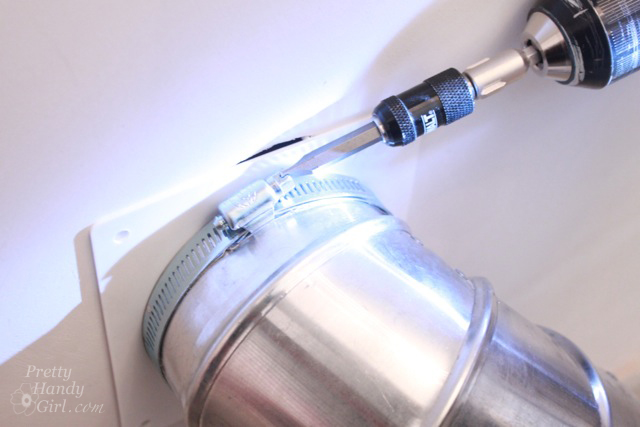
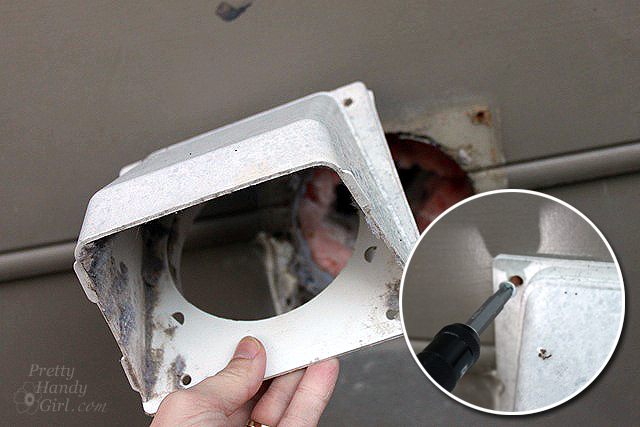
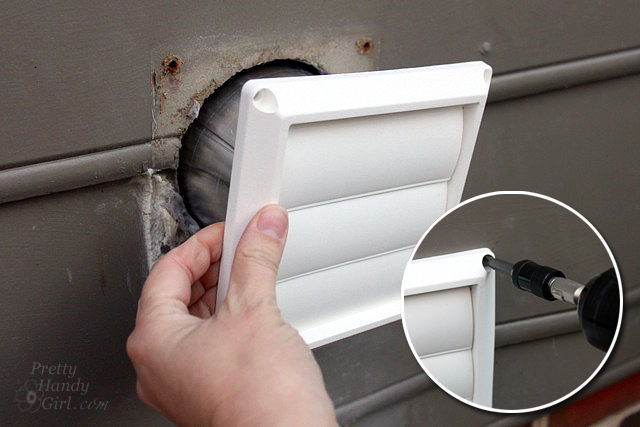

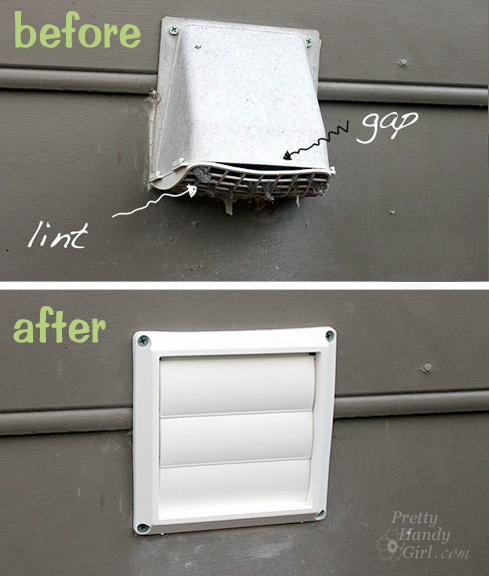
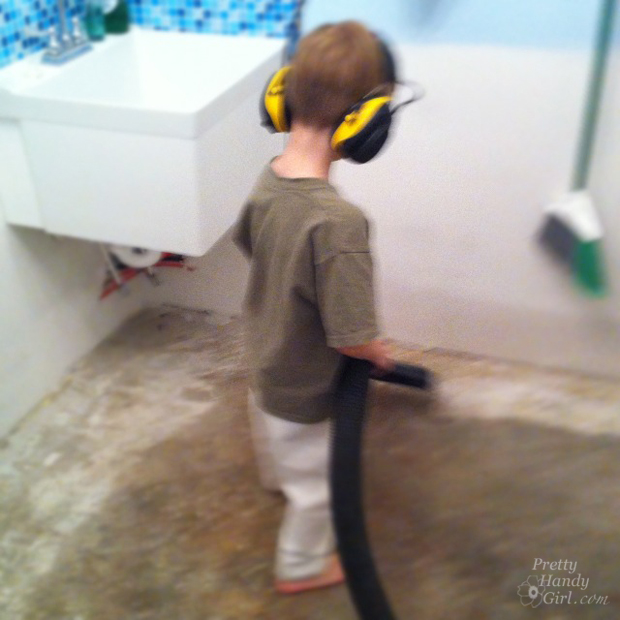
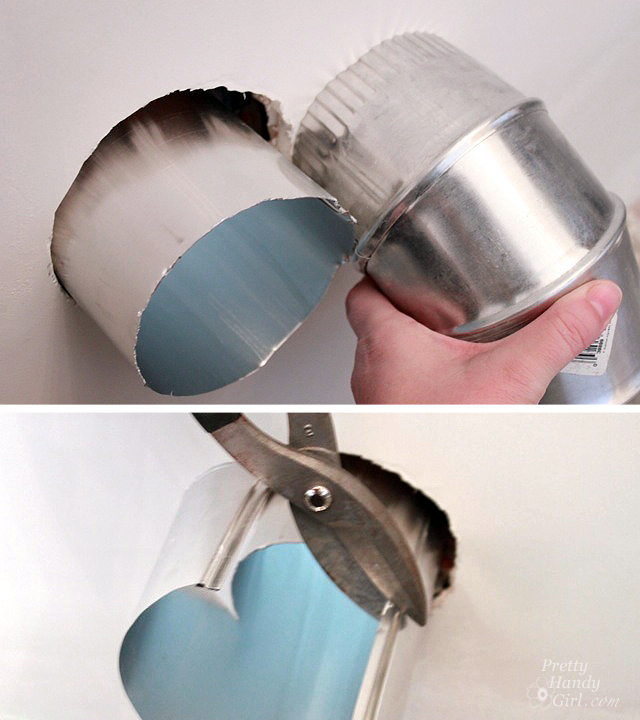
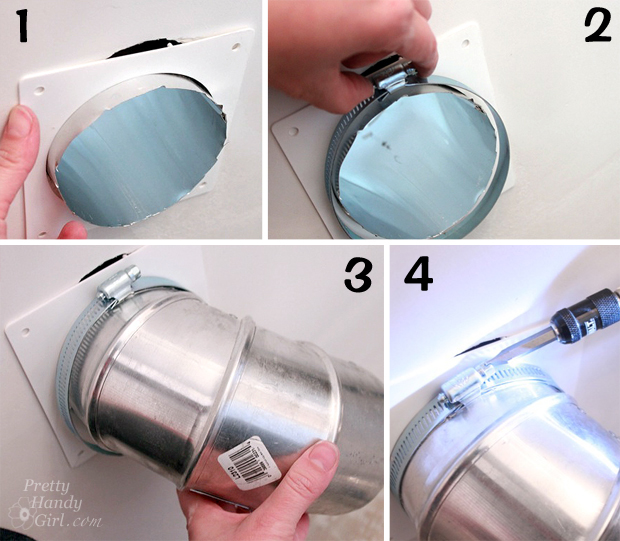
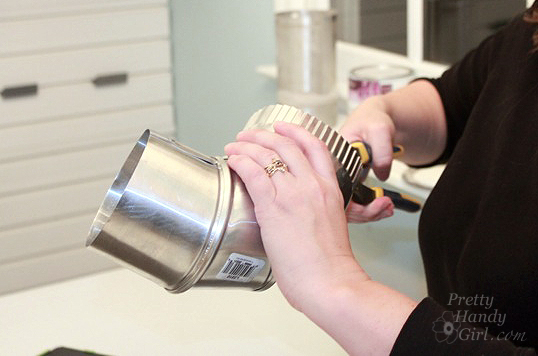
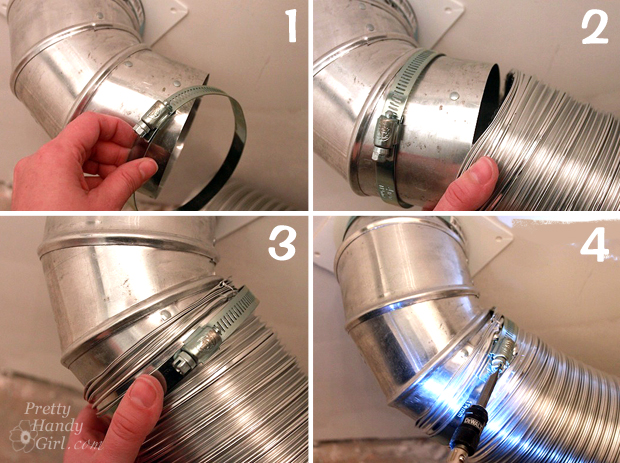
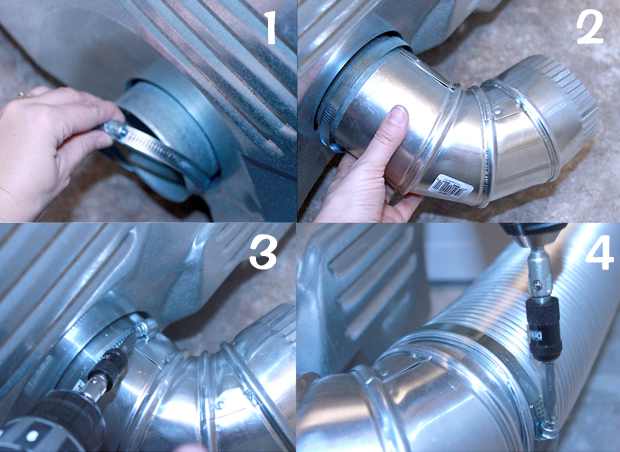
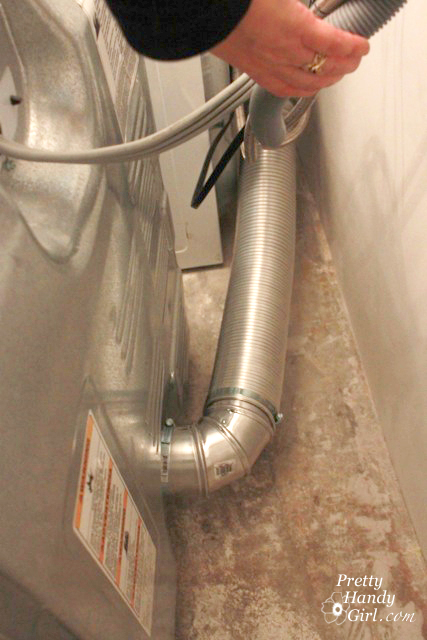

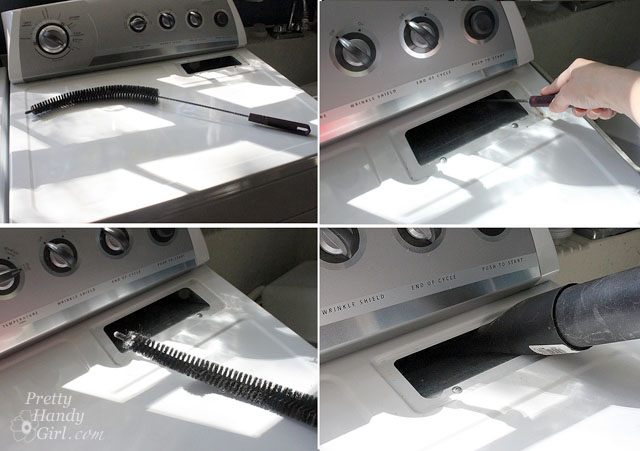


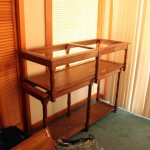
Regarding photo #2 where you shimmy the semi-rigid hose over the elbow duct. HOW? They are EXACTLY the same size, and I can’t fit the hose outside or inside the duct. I’m at risk of distorting the metal so much it’ll be useless, and I don’t have a crimper.
You can cut tabs at the opening and bend them in.
Brittany- you rock- amazon doesn’t stock that kit anymore- also, how to test if the final ductwork is leaking air ?
Thanks for letting me know about the Amazon link. I updated to a similar item. Regarding leaking. You can do one of two things. The first is to wet your hand and slowly run it along the ductwork. You should be able to feel any air on your wet skin. The other option is to hold a fluffy feather and run it along the duct looking for the feather to tremble. (I think you could use a lit match too, but this is a bit more dangerous, especially around a lot of lint build up.
I was wondering what you neant by “shimmying”?
Wow…never knew this! Thanks so much for this important information. I am in the process of buying a house and would never have known this had I not stumbled upon this video!
Thanks for the help! I live in Arizona so this is definitely a a necessity, it’s so dry and hot here
What secures the sleeve through the wall? i see it does not attach to the louvered vent and also with a pipe clamp to the first 90. but prvents the 90 and hose from slipping out?
Selling my home and the buyer’s inspector suggested I do this. I thought I already had the fireproof kind, thanks for helping me understand.
I know you posted this fantastic tutorial several years ago, but I’m hoping you can tell me where you got the white plastic collar that you put over the vent duct to cover the hole in the wall (on the inside wall). I’ve searched online for it with no luck. Thanks!
Deb, it came with this kit: http://amzn.to/1RwYFYK (affiliate link)
I want a FIREPROOF sleeve that will slide over the 4″ pipe that goes thru the wall. There are several wires in the wall that are above the vent that could catch fire. Do you
have any recommendations? Thanks.
I saw a tutorial online where a guy enlarged the hole to 5″ and slid a 5″ aluminum vent pipe into the space (very slightly angled downward so condensation will run outside). He caulked the space between that pipe and the wall. Then he slid a 4″ dryer vent pipe through the 5″ pipe, inserted pieces of flame-retardant foam or insulation between both pipes (to hold the 4″ pipe in the center of the 5″ pipe), and used fire-retardant expanding foam (small expansion so the pipes aren’t bent/distorted) between both pipes.
Thanks so much for posting this– I replaced my foil dryer vult vent with a semi-rigid one today. I did have to use Nashua tape to seal the new duct to the elbows, but other than that it worked well.
Great post! Please excuse my ignorance, but why are the “elbows” necessary? Is there a reason you can’t connect the semi-rigid hose without the elbows?
Megan, it’s hard to turn the semi-rigid duct to a full 90 degree turn within a small space. If you have room, you may not need it.